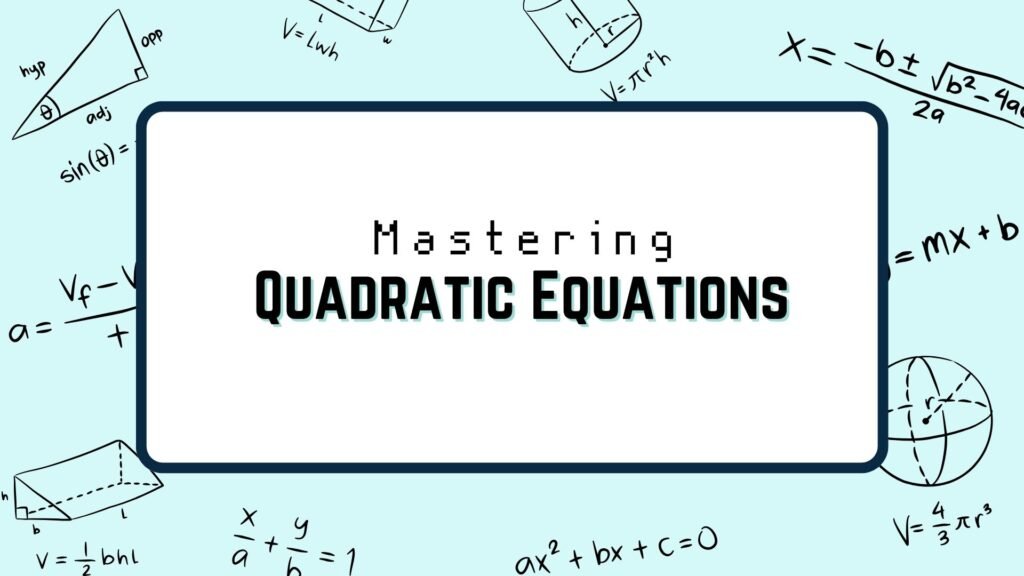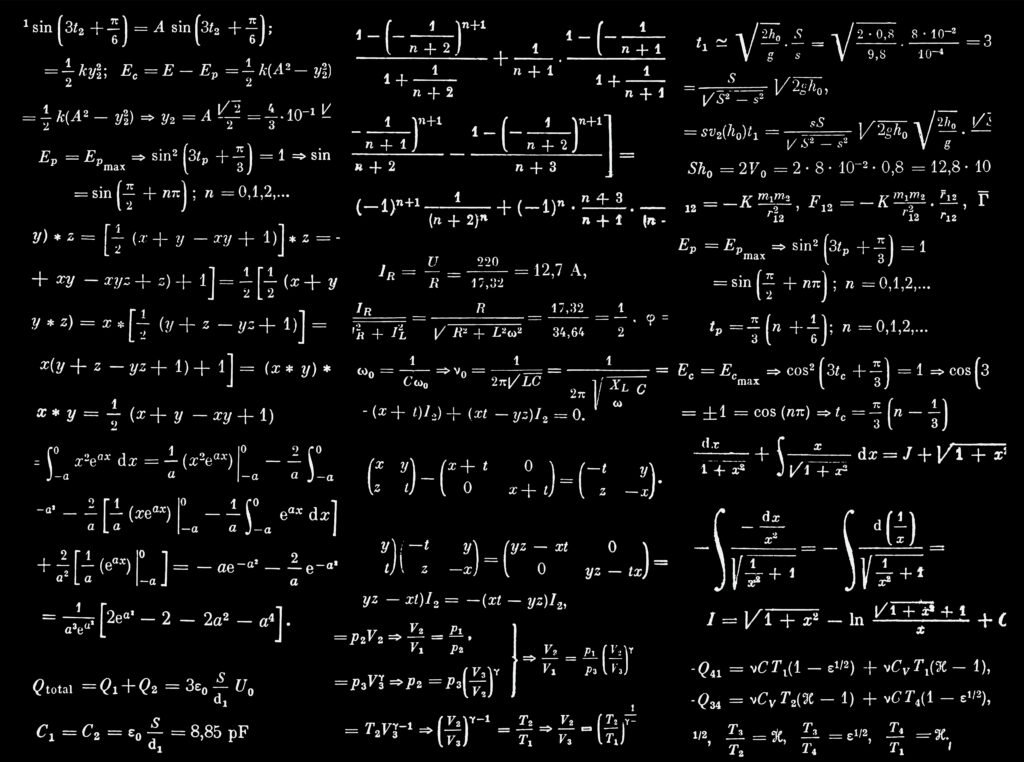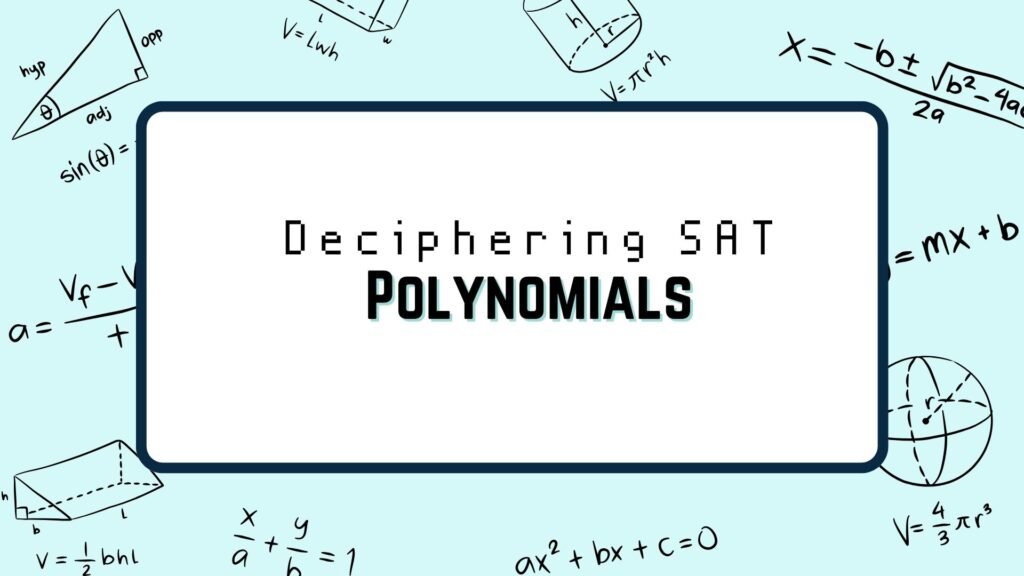Quadratic equations frequently make an appearance in the SAT Math section. If you find these a little daunting, you’re not alone. However, with the right techniques, they become much more manageable. Here’s how to conquer quadratic equations on the SAT.
Table of Contents
Understanding Quadratic Equations
A quadratic equation is an equation of the form:
A primary objective with any quadratic equation on the SAT is to find the values of x (roots or solutions) that satisfy it.
Tip 1: Recognize Different Forms
There are three primary ways a quadratic might be presented:
Being able to quickly recognize these forms will aid in determining the best approach to find the solution.
Tip 2: Factoring First
Often, the SAT will present quadratics that can be easily factored. For instance
Before attempting more complex methods, always check if the quadratic can be quickly factored.
Tip 3: The Quadratic Formula
For quadratics that cannot be easily factored, remember the quadratic formula: Memorize this formula, and practice using it so you’re confident applying it during the test.
Tip 4: Using the Discriminant
The term under the radical in the quadratic formula,
is known as the discriminant. It’s a valuable tool as it can determine the nature of the roots:
- If discriminant > 0, the quadratic has two distinct real roots.
- If discriminant = 0, the quadratic has one real root (or a repeated root).
- If discriminant < 0, the quadratic has no real roots.
Tip 5: Completing the Square
While this method might not be as quick as factoring or using the quadratic formula, it’s a valuable technique to know, especially when the SAT questions involve deriving the vertex of a quadratic. The goal is to express the quadratic in the vertex form.
Example:
Add and subtract 4:
From this, we can see the vertex is (-2, -1).
Tip 6: Graphical Solutions
Sometimes, graphical solutions can be quicker, especially if you can visualize the parabola. For instance, if the question asks for the x-intercepts of the quadratic, you’re looking for the points where the parabola crosses the x-axis.
Tip 7: Watch for Real-World Applications
The SAT loves to blend algebra with real-world scenarios. You might be given a problem about projectile motion or the area of a rectangle, both of which could require the use of a quadratic equation. Make sure you translate words into mathematical expressions accurately.
Conclusion:
Quadratic equations might seem challenging, but with practice and by employing the right strategies, you can handle them confidently. Remember always to read SAT questions carefully, practice regularly, and, most importantly, stay calm and focused during the exam. Your understanding of quadratics, combined with efficient test-taking strategies, will surely help you achieve your desired SAT Math score.




